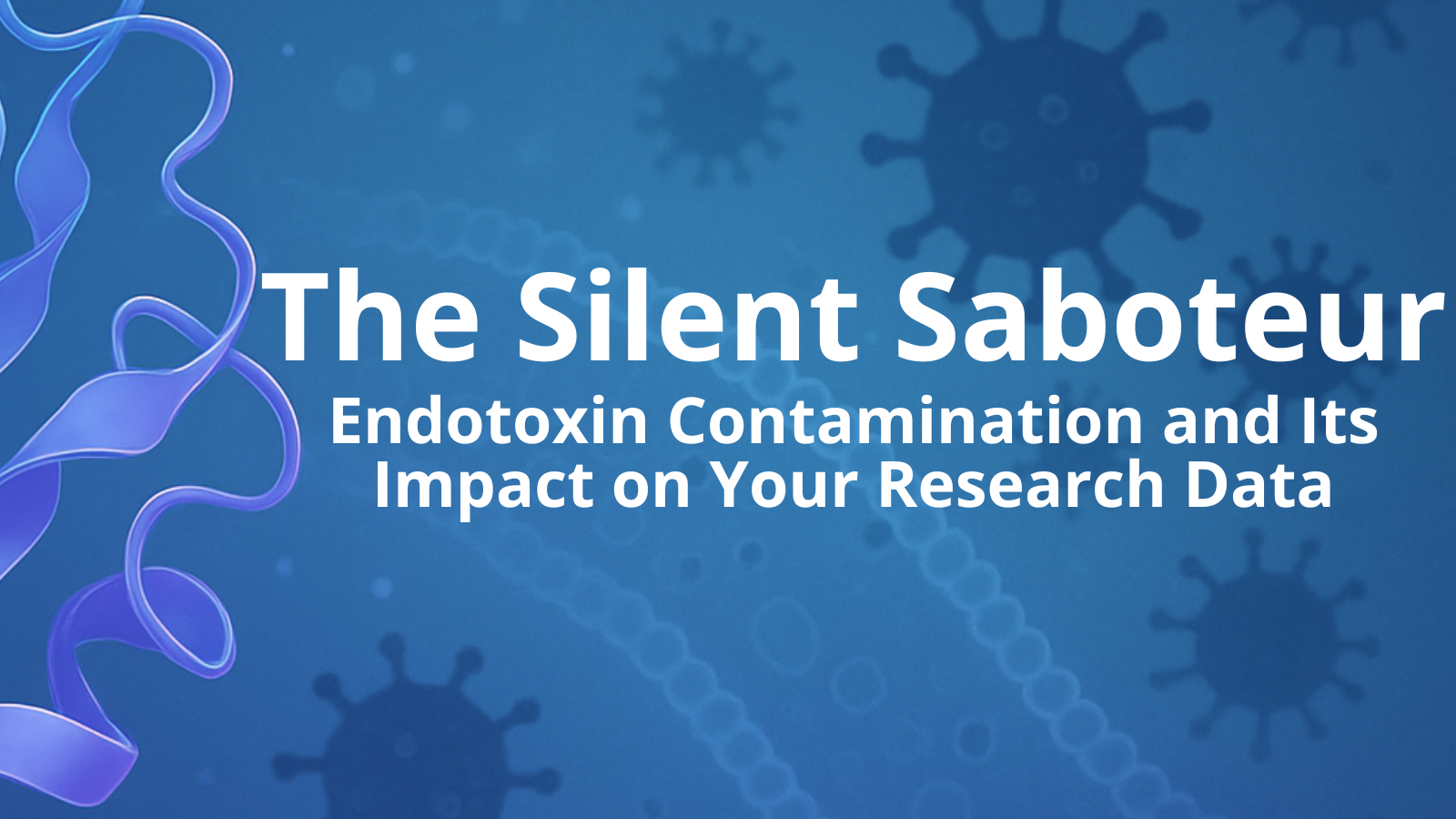Virus-like Particles: What they are and what they can o in Antibody Discovery
By Mallory Griffin
In the ongoing quest to develop safer vaccines, more precise therapeutics, and faster antibody screening tools, scientists have turned to a class of biomolecules that imitate viruses without the danger of infection. These engineered structures, known as virus-like particles (VLPs), are transforming biomedical research. VLPs are nanoscale assemblies made from viral structural proteins that mimic the outer shell of real viruses but lack the viral genetic material, making them non-infectious and incapable of replication. This unique combination of safety and viral mimicry allows VLPs to elicit strong immune responses, much like a natural virus, without posing the risk of disease.
Historically, VLPs have been widely used in vaccines, such as HPV vaccines like Gardasil and Cervarix. Recently, VLPs are increasingly used in therapeutic antibody discovery. Researchers leverage VLPs to present challenging protein targets, such as transmembrane proteins (e.g., GPCRs or solute carriers), which are notoriously difficult to express in traditional systems due to the structural complexity and hydrophobicity. This makes VLPs a strategic platform for next-generation immunotherapy research and development.
A Virus Without the Risk
VLPs are tiny, virus-shaped nanoparticles (50nm to 300nm in diameter) that resemble real viruses in structure but lack genetic material. This means they can’t replicate or cause disease, making them a safe and efficient platform for research and vaccine development.
These structures are built from viral capsid proteins, which naturally self-assemble into shells that imitate the outer layers of viruses. Because of their virus-like shape, VLPs trigger a strong immune response, just like actual pathogens do, without the associated risks of infection. This makes them especially attractive for immunization and antibody discovery.
Understanding VLP Structure
VLPs come in two main types:
-
Membrane VLPs feature a lipid bilayer—similar to natural viruses—wrapped around the capsid proteins. This lipid layer allows full-length membrane proteins to be embedded in their natural orientation. They are ideal for expressing multi-pass proteins like STEAP1, Claudin and GPCRs.

Figure 1. Enveloped VLP displaying multi-pass transmembrane protein
-
Non-Membrane VLPs, on the other hand, are made solely of capsid proteins. These are particularly useful for displaying antigens with poor immunogenicity, such as small, highly conserved, or glycosylated proteins like BCMA or CD24. Without the need for a lipid bilayer, the capsid itself enhances the immune response.

Figure 2. Non-envelope VLP displaying surface protein.
A Double Immune Hit: Humoral and Cellular Responses
Virus-like particles (VLPs) offer a unique advantage in immunotherapy and vaccine design due to their inherent ability to activate both the humoral and cellular arms of the immune system. Structurally resembling native viruses, VLPs are readily recognized as foreign by the innate immune system. This recognition activates antigen-presenting cells, particularly dendritic cells (DCs), which internalize the VLPs and process their viral proteins. These antigens are then presented on major histocompatibility complex (MHC) molecules to T cells, leading to the activation of cytotoxic CD8+ T cells and helper CD4+ T cells. This cellular response is essential for eliminating infected or abnormal cells and supporting broader immune activation.
At the same time, VLPs efficiently stimulate B cells by cross-linking B cell receptors (BCRs) due to their repetitive and highly ordered surface epitopes. This interaction initiates B cell activation, proliferation, and differentiation into plasma cells, which produce high-affinity antibodies specific to the antigens displayed on the VLP surface. The result is a strong humoral response, capable of neutralizing pathogens or marking target cells for immune clearance.
By simultaneously eliciting both T cell–mediated immunity and antibody production, VLPs create a synergistic and durable immune response. This dual-action mechanism is especially valuable for prophylactic vaccines, therapeutic vaccines for cancer, and antibody discovery programs, where long-lasting and highly specific immunity is critical for efficacy.

Figure 3. Schematic representation of the interaction between pattern recognition receptors (PRRs) from dendritic cells (DCs) and VLPs. (Zepeda-Cervantes et al.)
VLP as a Powerful Immunogen for Antibody Generation
In addition to their role in vaccines, VLPs are also emerging as a powerful tool in antibody discovery. Their ability to present multiple copies of an antigen in a highly organized and repetitive manner makes them a particularly strong immunogen for animal immunization. When used to immunize an animal, such as a rabbit or a mouse, VLPs elicit a strong and rapid immune response, leading to the production of high-titer antibodies. These antibodies can then be harvested and screened for a variety of research and therapeutic applications. This high immunogenicity and safety profile make VLPs an ideal platform for generating a diverse and robust antibody response for research and discovery purposes.
KACTUS offers a selection of various full-length multi-transmembrane proteins displayed on VLPs for antibody discovery and screening. Our product portfolio consists of various transmembrane targets or low immunogenicity antigens including GPCRs, Claudin protein family, STEAP1 and more. Our VLP proteins have been validated for bioactivity using techniques such as surface plasmon resonance (SPR), and enzyme-linked immunosorbent assays (ELISA). By utilizing VLP-displayed proteins, researchers can achieve more reliable and physiologically relevant results in their antibody development workflows, for complex and difficult-to-express antibody targets.
Product Validation

Immobilized Human STEAP1 VLP at 5 ug/ml (100ul/well) on the plate. Dose response curve for Vandortuzumab with the EC50 of 89.8ng/ml determined by ELISA.

Immobilized Human GPRC5D VLP at 5 ug/ml (100 ul/Well) on the plate. Dose response curve for Anti-GPRC5D Antibody, hFc Tag with the EC50 of 3.8 ng/ml determined by ELISA.
Product List
|
Cat. No. |
Display format |
Product Name |
Sequence |
Species |
Expression System |
|
VLP |
Human A2AR |
Met1-Ser412 |
Human |
HEK293 |
|
|
VLP |
Human APLNR |
Met1-Asp380 |
Human |
HEK293 |
|
|
VLP |
Human Cannabinoid receptor 1 |
Met1-Leu472 |
Human |
HEK293 |
|
|
VLP |
Human CCR2b |
Met1-Leu360 |
Human |
HEK293 |
|
|
VLP |
Biotinylated Human CCR2b |
Met1-Leu360 |
Human |
HEK293 |
|
|
VLP |
Human CD133 |
Met1-His865 |
Human |
HEK293 |
|
|
VLP |
Human CD20/MS4A1 |
Met1-Pro297 |
Human |
HEK293 |
|
|
VLP |
Biotinylated Human CD20/MS4A1 |
Met1-Pro297 |
Human |
HEK293 |
|
|
VLP |
Human CD24 |
Ser27-Gly59 |
Human |
HEK293 |
|
|
VLP |
Cynomolgus CD24 |
Ser26-Gly57 |
Cynomolgus |
HEK293 |
|
|
VLP |
Human Claudin 18.2 |
Met1-Val261 |
Human |
HEK293 |
|
|
VLP |
Biotinylated Human Claudin 18.2 |
Met1-Val261 |
Human |
HEK293 |
|
|
VLP |
Human Claudin 4 |
Met1-Val209 |
Human |
HEK293 |
|
|
VLP |
Human Claudin 6 |
Met1-Val220 |
Human |
HEK293 |
|
|
VLP |
Biotinylated Human Claudin 6 |
Met1-Val220 |
Human |
HEK293 |
|
|
VLP |
Cynomolgus Claudin 6 |
Met1-Val220 |
Cynomolgus |
HEK293 |
|
|
VLP |
Mouse Claudin 6 |
Met1-Val219 |
Mouse |
HEK293 |
|
|
VLP |
Human Claudin 9 |
Met1-Val217 |
Human |
HEK293 |
|
|
VLP |
Human CX3CR1 |
Met1-Leu355 |
Human |
HEK293 |
|
|
VLP |
Human CXCR5 |
Met1-Phe372 |
Human |
HEK293 |
|
|
VLP |
Human EDNRA |
Met1-Asn427 |
Human |
HEK293 |
|
|
VLP |
Human GCGR/Glucagon receptor |
Met1-Phe477 |
Human |
HEK293 |
|
|
VLP |
Human GPC3 |
Gly510-Asn554 |
Human |
E.coli |
|
|
VLP |
Human GPRC5D |
Met1-Val345 |
Human |
HEK293 |
|
|
VLP |
Biotinylated Human GPRC5D |
Met1-Val345 |
Human |
HEK293 |
|
|
VLP |
Cynomolgus GPRC5D |
Met1-Cys300 |
Cynomolgus |
HEK293 |
|
|
VLP |
Mouse GPRC5D |
Met1-Leu344 |
Mouse |
HEK293 |
|
|
VLP |
Human LPAR1/LPA receptor 1 |
Met1-Val364 |
Human |
HEK293 |
|
|
VLP |
Human Proteinase-activated receptor 1/PAR-1 |
Met1-Thr425 |
Human |
HEK293 |
|
|
VLP |
Human SSTR2 |
Met1-Ile369 |
Human |
HEK293 |
|
|
VLP |
Human STEAP1 |
Met1-Leu339 |
Human |
HEK293 |
|
|
VLP |
Human TM4SF1 |
Met1-Cys202 |
Human |
HEK293 |
|
|
VLP |
VLP Control |
/ |
/ |
HEK293 |
|
|
VLP |
Biotinylated VLP Control |
/ |
/ |
HEK293 |
References
-
Jeong, H., & Seong, B. L. (2017). Exploiting virus-like particles as innovative vaccines against emerging viral infections. Journal of Microbiology, 55(3), 220-230. https://doi.org/10.1007/s12275-017-7058-3
-
Noad, R., & Roy, P. (2003). Virus-like particles as immunogens. Trends in Microbiology, 11(9). https://doi.org/10.1016/S0966-842X(03)00208-7
-
Nooraei, S., Bahrulolum, H., Hoseini, Z.S., Katalani, C., Hajizade, A., Easton, A. J., & Ahmadian, G. (2021). Virus-like particles: preparation, immunogenicity and their roles as nanovaccines and drug nanocarriers. Journal of Nanobiotechnology, 19(59). https://doi.org/10.1186/s12951-021-00806-7
-
Peixoto, C., Sousa, M.F. Q., Silva, A. C., Carrondo, M.J. T., & Alves, P.M. (2007). Downstream processing of triple layered rotavirus like particles. Journal of Biotechnology, 127, 452-461. https://doi.org/10.1016/j.jip.2011.05.004
-
Vicente, T., Roldão, A., Peixoto, C., Carrondo, M., & Alvesa, P. M. (2011). Large-scale production and purification of VLP-based vaccines. Journal of Invertebrate Pathology, 108(S42-S48). https://doi.org/10.1016/j.jip.2011.05.004
-
Zepeda-Cervantes, J., Ramírez-Jarquín, J. O., & Vaca, L. (2020). Interaction Between Virus-Like Particles (VLPs) and Pattern Recognition Receptors (PRRs) From Dendritic Cells (DCs): Toward Better Engineering of VLPs. Frontiers in Immunology, 11(529088). https://doi.org/10.3389/fimmu.2020.01100
















